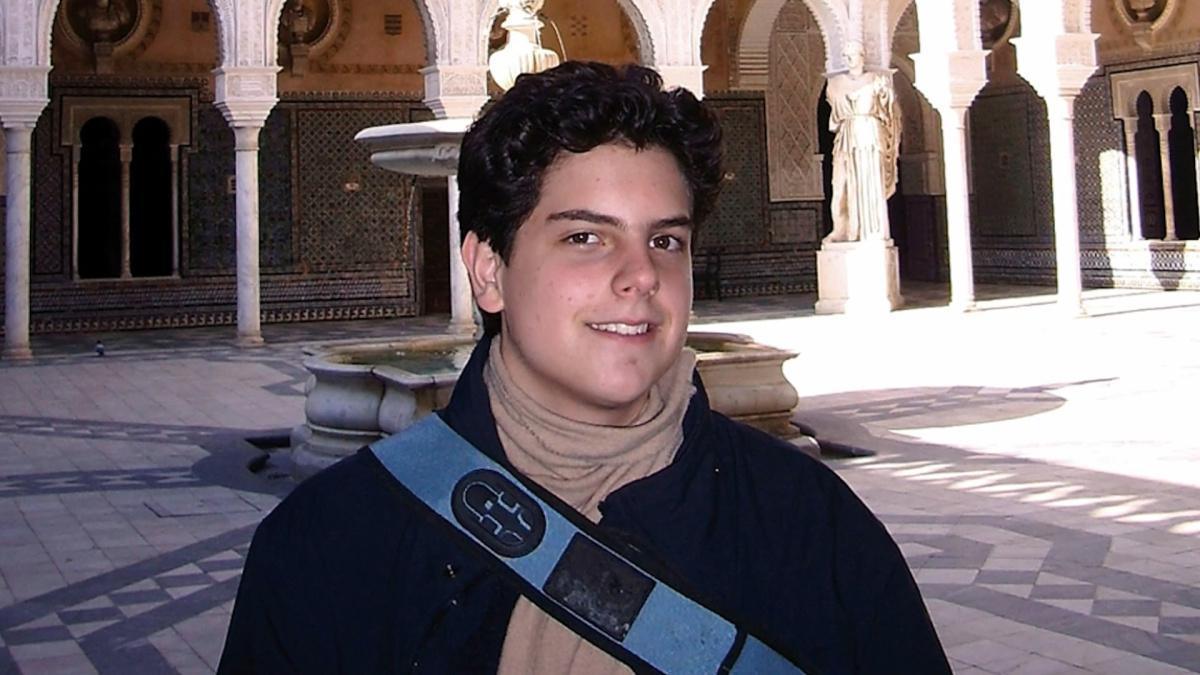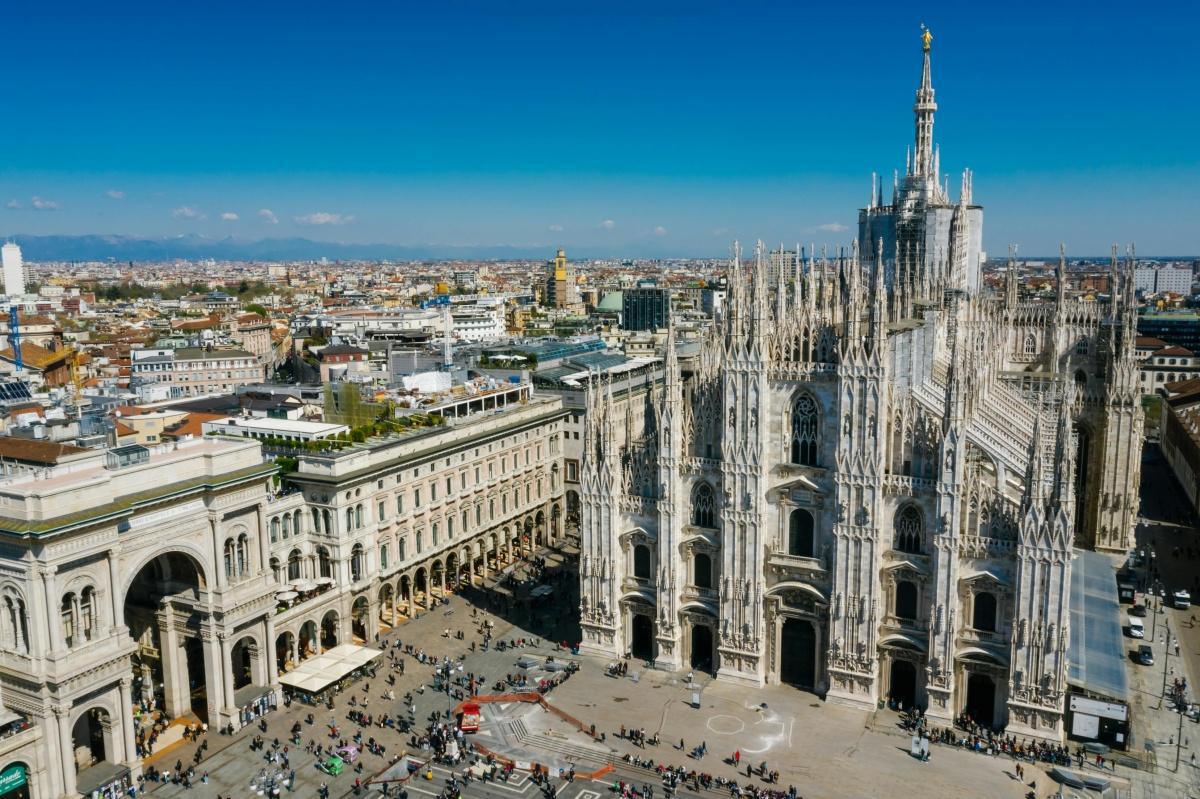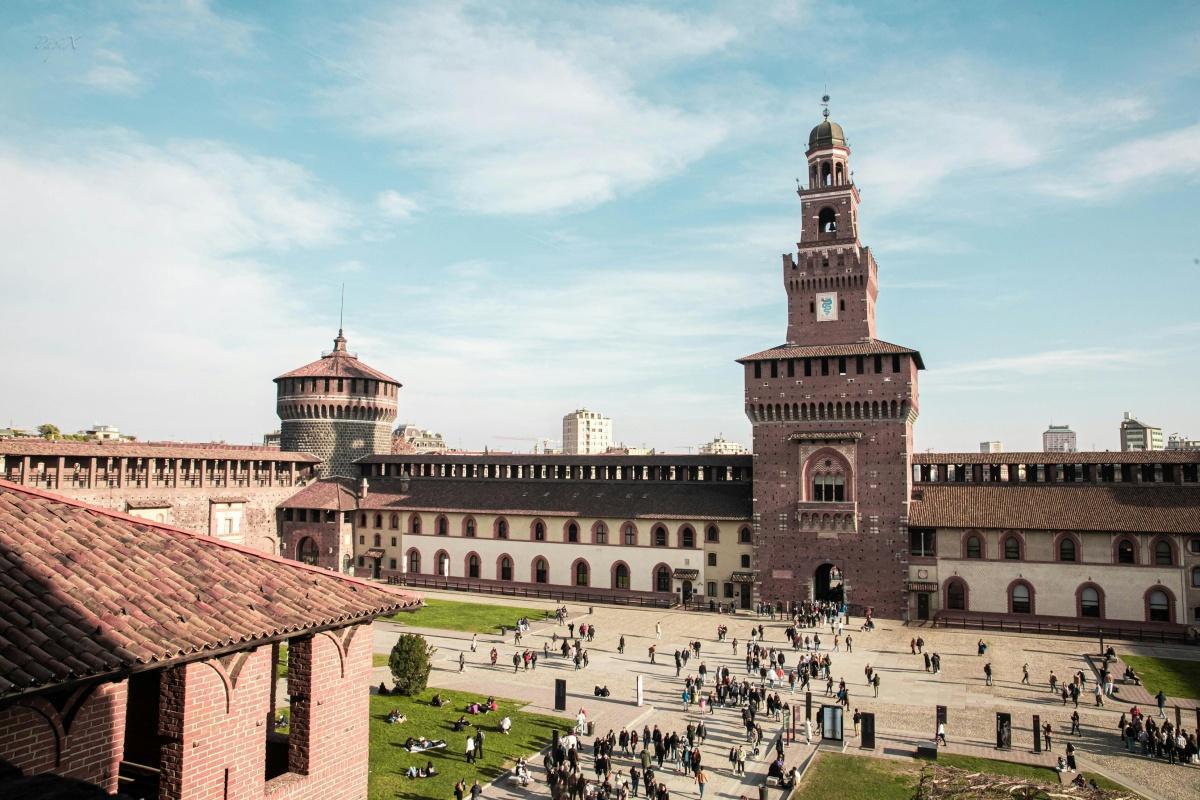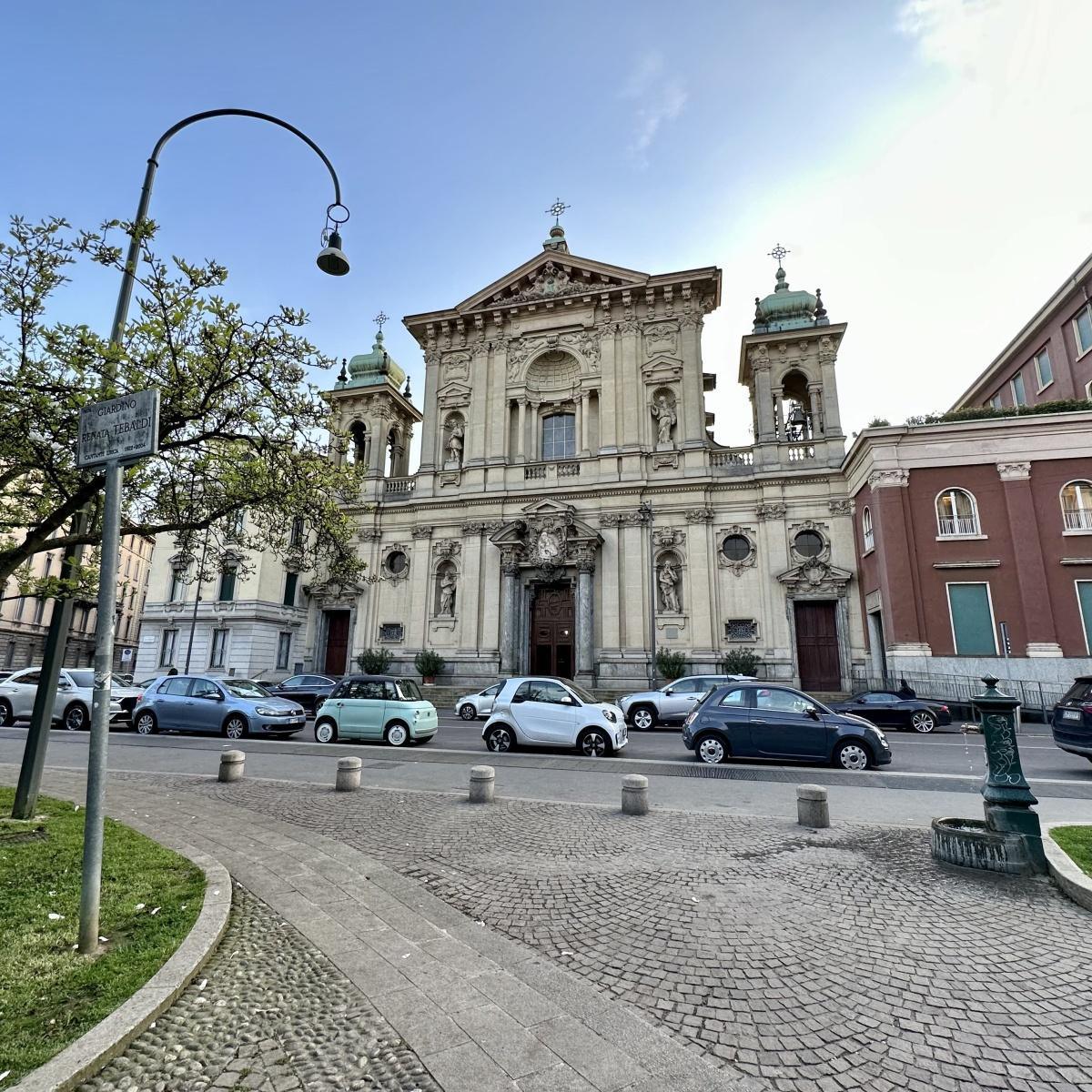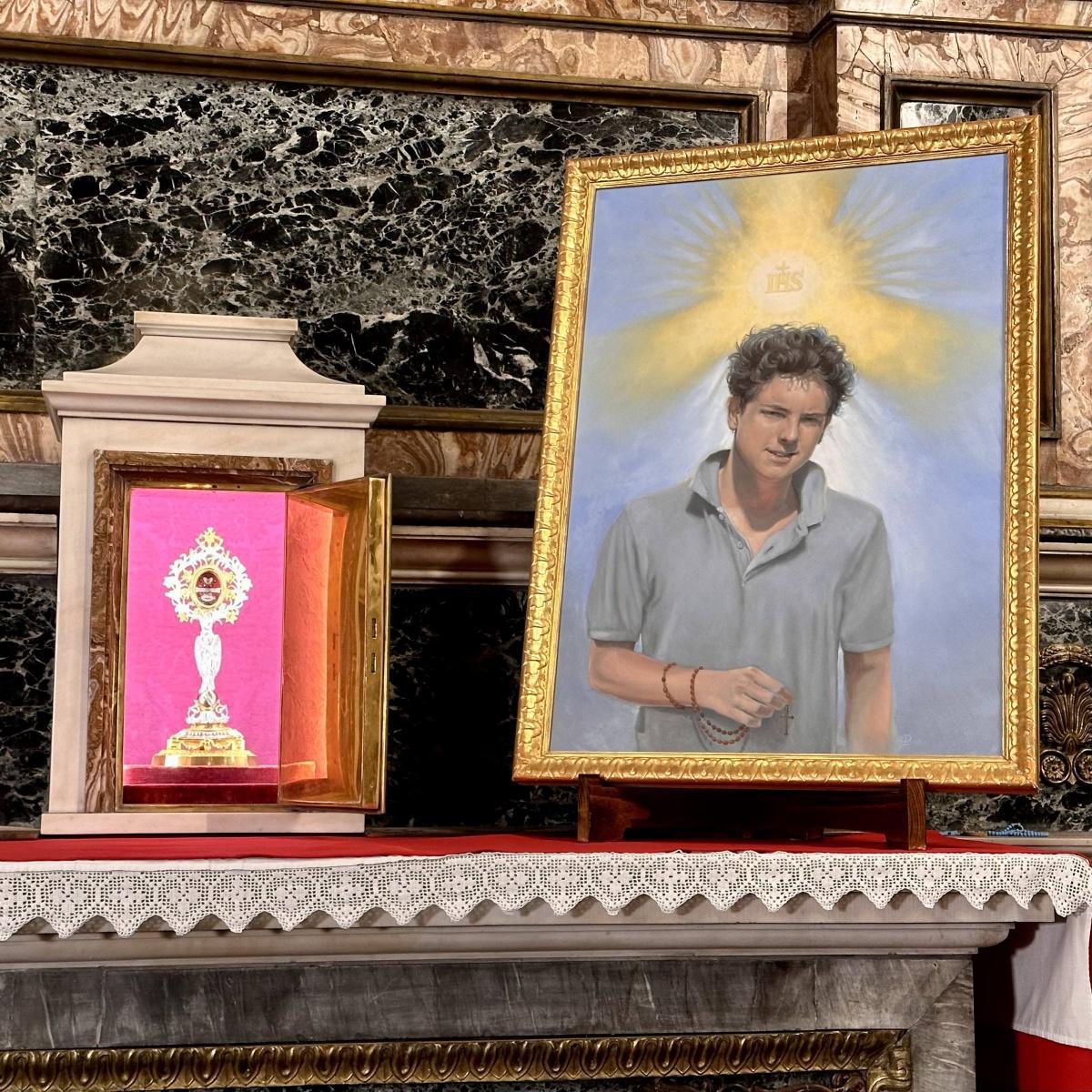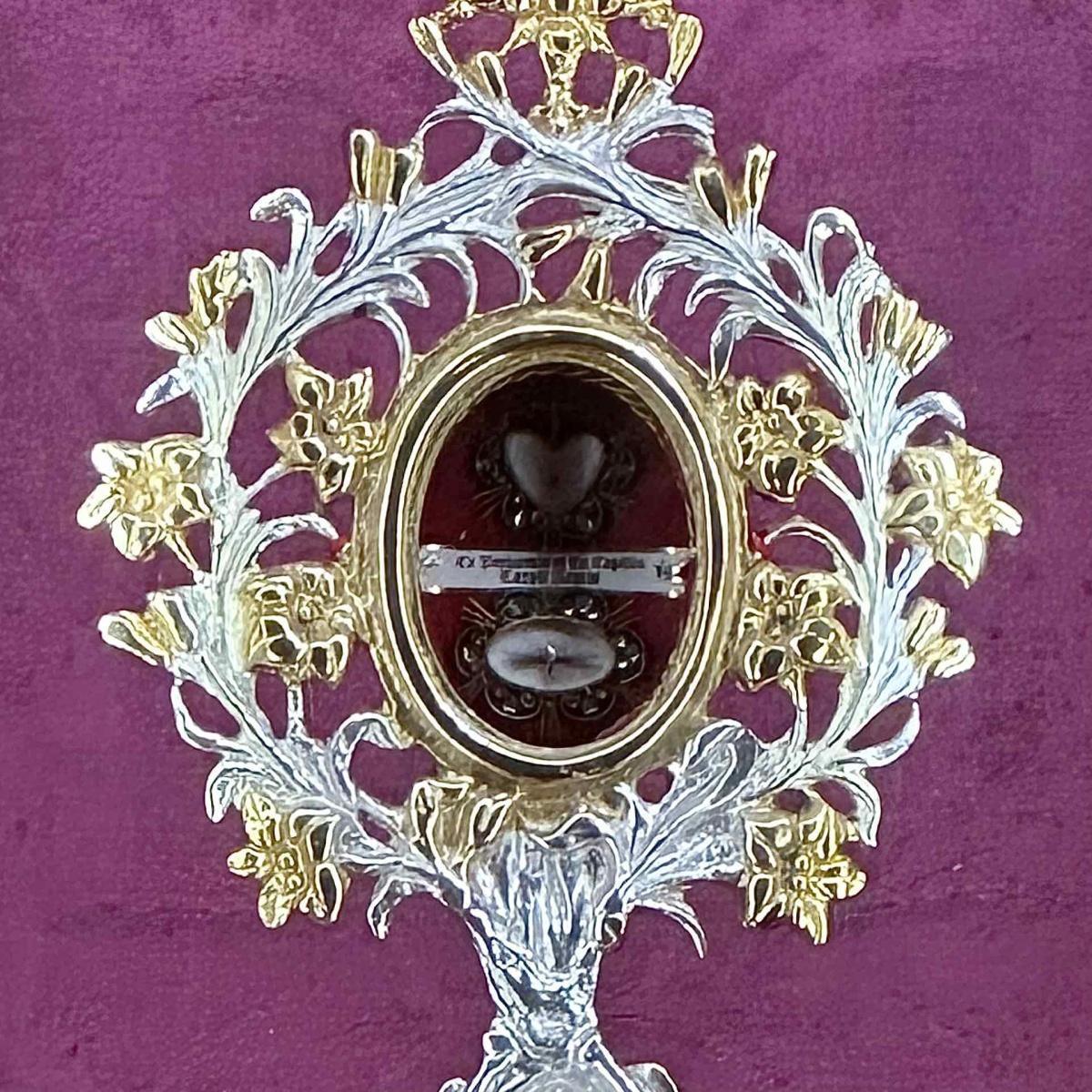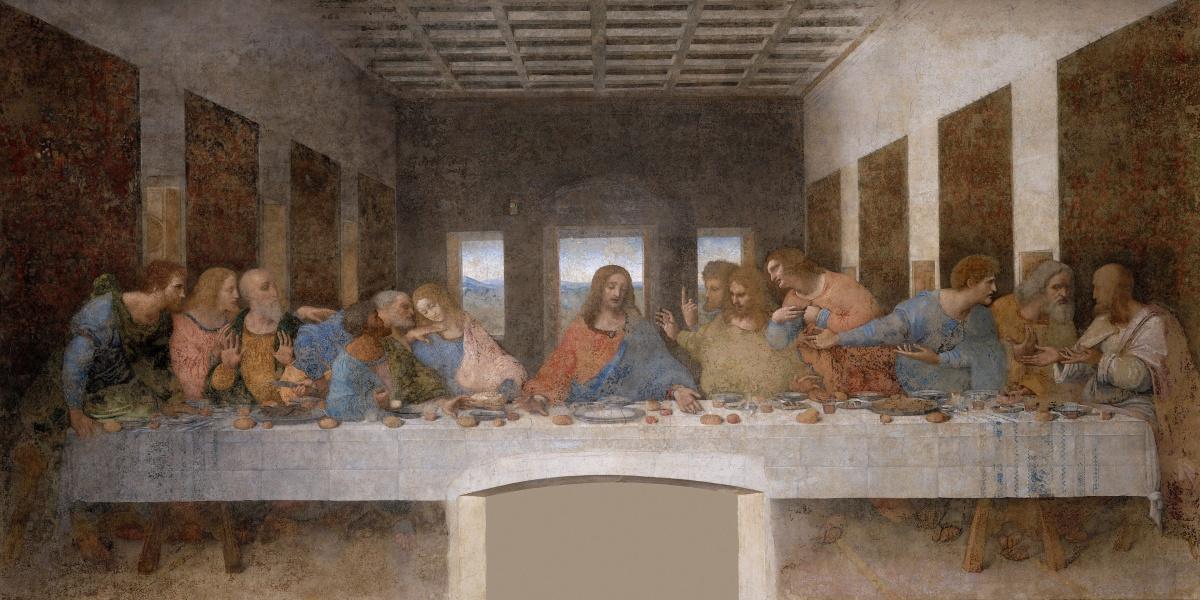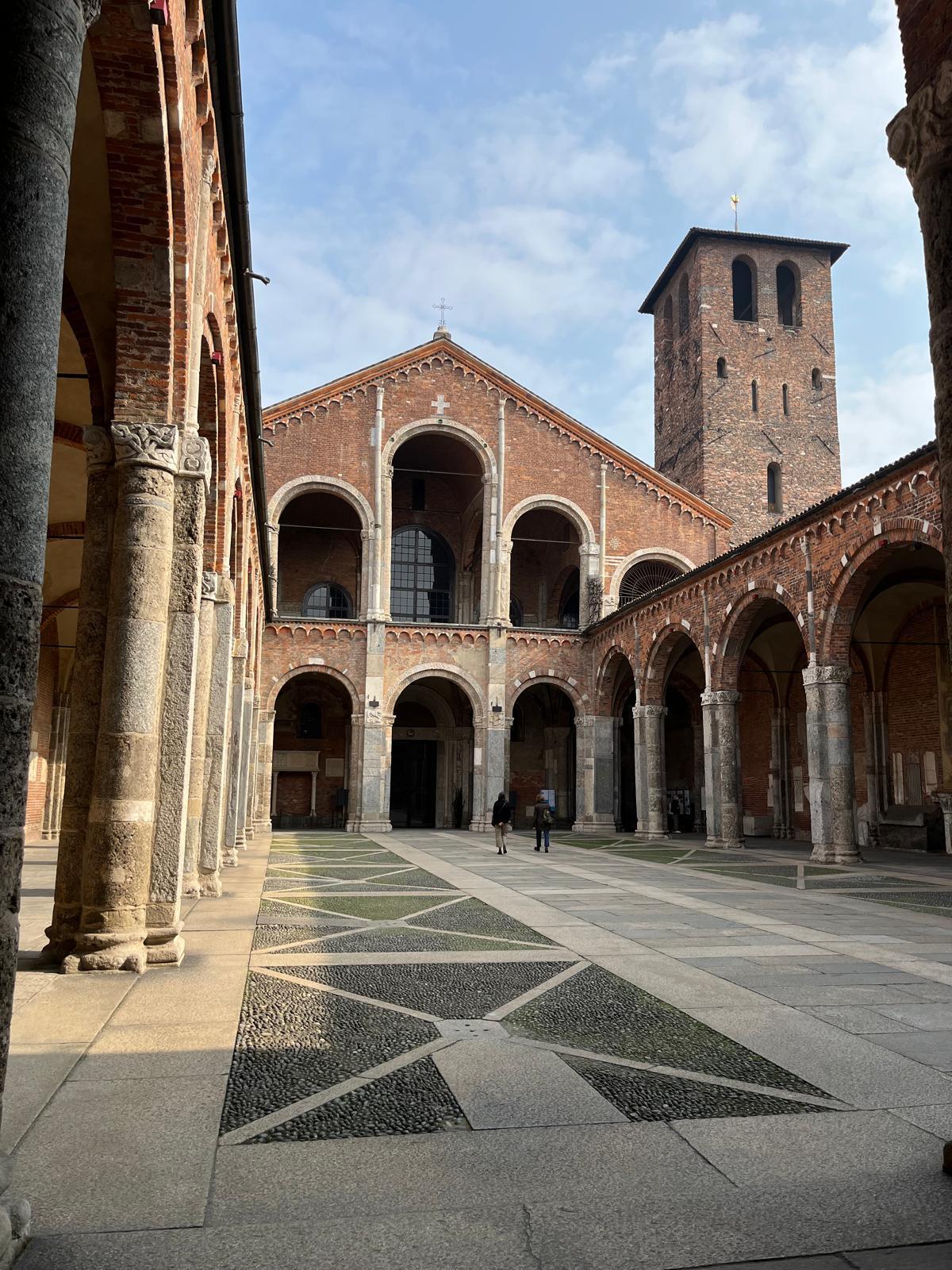Sites from Carlo's Childhood & Iconic Pilgrimage Sites in Milan
Open Map
Explore the vibrant streets of Milan through the inspiring story of Blessed Carlo Acutis, the “Millennial Saint of the Eucharist,” who brought his faith and talents to the worldwide web. This self-guided walking tour leads you through the key places from Carlo’s short but impactful life—where he lived, prayed, studied, and served others with joyful faith and deep devotion to the Blessed Sacrament.
Visit his childhood home, the parish of Santa Maria Segreta where he attended daily Mass, and the schools where he shared his love for technology and Jesus with friends and teachers alike. Reflect at sites that shaped his mission to spread belief in the Real Presence of Christ—online and beyond.
Blending history, prayer, and digital-age holiness, this tour invites pilgrims of all ages to encounter a teenage saint who proves that sanctity is possible—even in sneakers.
Locations
Duomo di Milano (Cathedral of Milan)
Heart of Milan and 6th Largest Church in the World
The Duomo of Milan is one of the most iconic cathedrals in the world and a masterpiece of Gothic architecture. Located in the heart of Milan, Italy, this magnificent structure took nearly six centuries to complete, with construction beginning in 1386 and concluding in 1965. It is the largest church in Italy and the second-largest in Europe, boasting an elaborate façade adorned with countless statues, spires, and intricate carvings. Visitors can marvel at its breathtaking stained-glass windows, explore the vast interior, and ascend to the rooftop for stunning panoramic views of the city. The cathedral is also home to the relic of the Holy Nail, believed to be from the Crucifixion of Christ, which is displayed annually. As a site of deep religious and cultural significance, the Duomo of Milan remains a must-visit destination for pilgrims and travelers alike.
Important Details:
-
Construction: Took nearly 600 years to complete, with the project starting in 1386 and finishing in 1965.
-
Holy Relic: Houses the relic of the Holy Nail, which is believed to have been used in the Crucifixion of Christ.
-
Rooftop Views: Visitors can access the rooftop for sweeping panoramic views of Milan and the surrounding Alps.
Ambrosian Rite
In addition to being an architectural and historical marvel, the Duomo of Milan is also an important center for liturgical traditions, particularly the Ambrosian Rite. This ancient rite, distinct from the Roman Rite, is celebrated in Milan and its surrounding regions. It is named after St. Ambrose, the bishop of Milan in the 4th century, who established the liturgical practices still used today. The Ambrosian Rite has unique features, including a different order of Mass, specific hymns, and the use of particular prayers. It is celebrated in the Duomo, especially during significant religious occasions, adding to the spiritual significance of the cathedral.
Cathedral for Blessed Carlo Acutis
While the Duomo of Milan is primarily associated with the Archdiocese of Milan and its rich history, it also holds a significant connection to St. Carlo Acutis, a modern-day saint and Milan native. St. Carlo Acutis, known for his deep faith, love of the Eucharist, and remarkable use of technology to promote Catholic devotion, spent much of his life in Milan. Though he is not formally associated with the Duomo, it is often referred to as the cathedral of St. Carlo Acutis due to his close ties to the city and his frequent visits to the cathedral. His cause for canonization was initiated after his untimely death in 2006, and he was beatified in 2020. His connection to Milan’s cathedral highlights the city’s continuing spiritual significance and its role in fostering modern-day saints.
Sforzesco Castle
Milan's Medieval Fortress
The Castello Sforzesco is a historic fortress in the heart of Milan, Italy, renowned for its rich history, impressive architecture, and cultural significance. Originally built in the 14th century by the Visconti family, it was later expanded and transformed by Francesco Sforza in the 15th century, becoming a symbol of Milanese power and prestige. The castle has served as a military fortress, a ducal residence, and even a barracks before being restored as a cultural hub. Today, it houses several museums, including collections of Renaissance art, ancient artifacts, and works by masters like Michelangelo and Leonardo da Vinci. With its grand courtyards, towering walls, and scenic gardens, Castello Sforzesco remains one of Milan’s most visited landmarks.
Important Details:
-
Historical Significance: Originally built in the 14th century, it became the seat of the powerful Sforza family in the 15th century.
-
Michelangelo’s Pietà Rondanini: The castle is home to the unfinished last sculpture of Michelangelo.
-
Leonardo da Vinci’s Influence: The castle features frescoes and architectural contributions from Leonardo da Vinci, who worked for the Sforza court.
Church of Santa Maria Segreta
Carlo's Parish where he adored Jesus in the Blessed Sacrament and taught Catechism
The Church of Santa Maria Segreta is a significant place of worship in Milan, known for its beautiful architecture and deep spiritual connection to Blessed Carlo Acutis. Located in the heart of the city, this parish church was built in the early 20th century and features a striking neo-Romanesque design with elegant brickwork and intricate mosaics. As the parish where Carlo Acutis regularly attended Mass and deepened his devotion to the Eucharist, it holds special meaning for pilgrims seeking to follow in his footsteps. The church remains an active place of faith, welcoming visitors and locals alike for prayer, reflection, and liturgical celebrations.
A relic of Carlo's heart can be found in a side chapel as depicted here in the photo.
Important Details:
-
Connection to Carlo Acutis: This was the parish where Blessed Carlo Acutis attended Mass and strengthened his love for the Eucharist.
-
Architectural Beauty: The church features a neo-Romanesque design, with intricate mosaics and a peaceful atmosphere for prayer.
-
Active Parish Life: Santa Maria Segreta continues to serve as a vibrant faith community with regular Masses and spiritual activities.
Leonardo's Last Supper
Da Vinci's Masterpiece depicting the institution of the Holy Eucharist
The Museo Cenacolo Vinciano is home to one of the most famous and revered masterpieces in the world—Leonardo da Vinci’s Last Supper. Housed in the Convent of Santa Maria delle Grazie in Milan, this iconic fresco was painted between 1495 and 1498 and depicts the dramatic moment when Jesus announces that one of his disciples will betray him. Despite centuries of deterioration and restoration efforts, the painting remains a powerful testament to Leonardo’s genius and his ability to capture deep human emotion. Due to its fragility, access to the painting is highly restricted, with limited daily visitors to ensure its preservation.
Important Details:
-
Leonardo’s Masterpiece: The Last Supper is one of the most studied and celebrated works of art in history.
-
Historic Convent Setting: The fresco is located in the Convent of Santa Maria delle Grazie, a UNESCO World Heritage Site.
-
Limited Access: Visits are highly restricted, and reservations must be made in advance.
Basilica of St. Ambrose (Sant'Ambrogio)
Burial place of the "Saint of Milan" and Romanesque Church
The Basilica of St. Ambrose (Sant’Ambrogio) is one of Milan’s most important and historic churches, dedicated to the city’s patron saint, St. Ambrose. Founded in 379 AD by the saint himself, this basilica is a masterpiece of Romanesque architecture, featuring distinctive red-brick walls, soaring arcades, and an ancient portico. Inside, visitors can venerate the relics of St. Ambrose, which rest beneath the high altar alongside the martyrs Gervasius and Protasius. The basilica is also home to stunning mosaics, medieval artwork, and the famous Golden Altar, a magnificent 9th-century masterpiece covered in gold and precious stones. As a center of Milan’s Christian heritage, Sant’Ambrogio continues to be a place of deep spiritual significance.
Important Details:
-
One of Milan’s Oldest Churches: Founded in 379 AD by St. Ambrose, the basilica is a cornerstone of Milan’s Christian identity.
-
Tomb of St. Ambrose: The relics of Milan’s patron saint rest here, along with the martyrs Gervasius and Protasius.
-
Romanesque Beauty: The church features a stunning mix of medieval mosaics, artwork, and the renowned Golden Altar.
Open Map
Stay Connected:
Sign up and get weekly updates with new locations, itineraries and videos.


